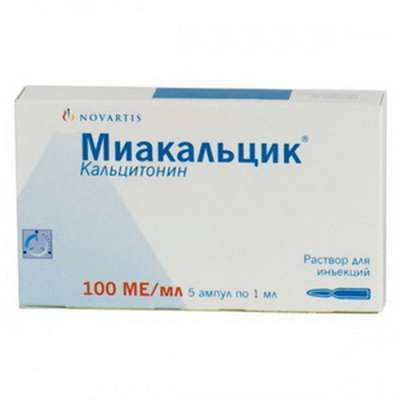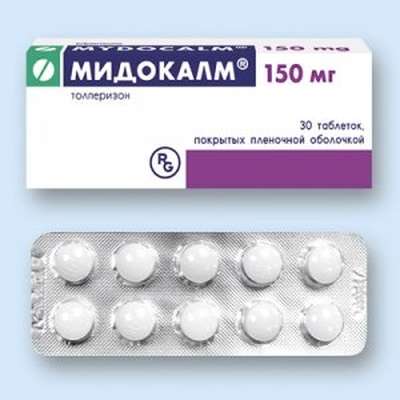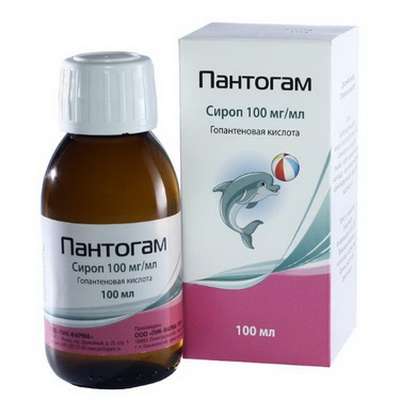Instruction for use: Alprazolam
I want this, give me price
The Latin name of the substance Alprazolam
Alprazolamum (genus. Alprazolami)
Chemical name
8-Chloro-1-methyl-6-phenyl-4H- [1,2,4] triazolo [4,3-a] [1,4] benzodiazepine
Gross Formula
C17H13ClN4
Pharmacological group:
Anxiolytics
The nosological classification (ICD-10)
F06 Other mental disorders due to brain damage or dysfunction or somatic disease: Somatogenic depressions; Somatogenic psychosis
F06.4 Organic Anxiety Disorder
F10.2 Syndrome of alcohol dependence: Alcoholism; Alcohol addiction; posiomania; Dependence on alcohol; dipsomania; drunken state; alcohol abuse; Ideatornoy violations in alcoholism; Quarterly booze; Obsessive craving for alcohol; Neurotic symptoms of alcoholism; Craving for alcohol; Psychoorganic syndrome in chronic alcoholism; Reduced craving for alcohol; chronic alcoholism
F10.3 Abstinence: Alcohol withdrawal syndrome; Abstinence syndrome; Abstinence syndrome with alcoholism; Abstinence; Alcohol abstinence; Alcohol withdrawal status; Alcohol withdrawal syndrome; Postabstinctive disorder; Post-abstinence condition; Hangover syndrome; Abstinence syndrome; Alcohol abstinence syndrome; Alcohol withdrawal syndrome; Abstinence condition
F11 Mental and behavioral disorders due to use of opioids: heroin addiction; heroin addiction; Diagnosis of opioid dependence; Dependence on opioids; morphine withdrawal; Opiate withdrawal; opium addiction; Opioid dependence; Opioid addiction; Behavioral disorder and postabstinentnom for drug dependence
F25 Schizoaffective disorders: Schizoaffective disorders; Schizoaffective psychosis; Schizoaffective disorder
F29 Inorganic psychosis, unspecified: Childhood psychoses; Psychomotor agitation in psychoses; Hallucinatory-delusional disorders; Hallucinatory-delusional syndrome; Intoxication psychosis; Manic-delusional disorders; Manic chronic psychosis; Manic psychosis; Acute psychosis; paranoid psychosis; Paranoid psychosis; Subacute psychosis; Presenile psychosis; Psychosis; Intoxicating psychosis; Psychosis is paranoid; Psychosis in children; Reactive psychosis; Chronic psychosis; Chronic hallucinatory psychosis; Chronic psychosis; Chronic psychotic disorder; Schizophrenic psychosis
F32 Depressive episode: Adynamic subdepression; Astheno-adynamic subdepressive states; Asthenodepressive disorder; Astheno-depressive disorder; Asthenodepressive state; Astheno-depressive state; Major Depressive Disorder; Vyaloapatichesky depression with retardation; Double depression; Depressive pseudodement; Depressive illness; Depressive mood disorder; Depressive disorder; Depressive mood disorder; Depressive state; Depressive disorders; Depressive syndrome; Depressive syndrome larviated; Depressive syndrome with psychoses; Depressed masks; Depression; Depression Depletion; Depression with the phenomena of inhibition within the framework of cyclothymia; Depression is smiling; Involutional depression; Involutionary melancholy; Involutional depression; Manic-depressive disorder; Masked Depression; Melancholic Attack; Neurotic depression; Neurotic depression; Shallow Depression; Organic depression; Organic depressive syndrome; Simple depression; Simple melancholic syndrome; Psychogenic depression; Reactive depression; Reactive depression with moderate psychopathological symptoms; Reactive depressive states; Reactive depression; Recurrent depression; Seasonal depressive syndrome; Severostatic depression; Senile Depression; Senile Depression; Symptomatic Depression; Somatogenic depression; Cyclotymic depression; Exogenous Depression; Endogenous depression; Endogenous Depressive Conditions; Endogenous Depression; Endogenous depressive syndrome
F34.0 Cyclothemia
F34.1 Dysthymia: Dysthymic state within the framework of psychopathic disorders in children and adolescents
F40.0 Agoraphobia: Fear of open space; Fear of being in a crowd
F40.1 Social phobia: Social isolation; Social detachment; Social phobia; Social Anxiety Disorder / Social Phobia; Sociophobia; Sociopathy
F41.0 Panic disorder [episodic paroxysmal anxiety]: Panic state; Panic attack; Panic; Panic disorder
F41.1 Generalized anxiety disorder: Generalized anxiety disorders; Generalized alarm; Phobic neurosis; Anxiety reaction; Anxious neurosis
F42 Obsessive-compulsive disorder: Obsessive-compulsive syndrome; Obsessive compulsive states; Obsessive-compulsive syndrome; The obsession syndrome; The obsession neurosis; Obsessive-compulsive neurosis; Obsessions
F43.0 Acute stress reaction
F43.1 Post-traumatic stress disorder: Combat fatigue; Catastrophe Syndrome; The survivor's syndrome; Traumatic isolation; Traumatic neurosis; Traumatic syndrome; Post-traumatic stress disorder
F43.2 Adverse Reactions Disorder: Mental Adjustment Disorder
F44 Dissociative [conversion] disorders: Psychogenic psychosis; Conversion disorder; Dissociative phenomena; Pseudodegmentation; Conversion symptoms
F45 Somatoform disorders: Psychosomatic disorder; Psychosomatic disorders; Psychosomatic diseases; The state of excitement in somatic diseases; Functional psychosomatic disorders of the cardiovascular system
F79 Mental retardation, unspecified: Mental retardation; Infantilism mental; Violation of mental activity; Oligophrenia; Lag behind mental development; Delayed development of intellectual abilities in children and adolescents; Slowed mental development in children; Maloumia; Oligopsihia; Mental failure; Impaired mental function; Mental retardation; Lack of intellectual development in children; Lack of mental development in children; Mental retardation; Lack of mental development in children; Mental retardation
G93.4 Unspecified Encephalopathy: bilirubin encephalopathy; lacunarity status; Tremor when portal-systemic encephalopathy; The latent hepatic encephalopathy; Atherosclerotic encephalopathy; Hypertensive encephalopathy; hypoxic encephalopathy; dismetabolic encephalopathy; Encephalopathy; brain lesion; Porto-caval encephalopathy; Vascular encephalopathy; Traumatic encephalopathy; encephalopathy; encephalopathy; Encephalopathy secondary genesis; Encephalopathy discirculatory; Encephalopathy portocaval; epileptic encephalopathy; hemorrhagic shock and encephalopathy syndrome; Subacute spongiform encephalopathy
CAS Code
28981-97-7
Characteristics of the substance Alprazolam
Anxiolytic, benzodiazepine derivative. White or white with a creamy shade of fine crystalline powder. Insoluble in water and poorly soluble in alcohol.
Pharmacology
Pharmacological action - anxiolytic, miorelaxing, central, sedative.
Linking to benzodiazepine and GABAergic receptors, causes inhibition of the limbic system, the thalamus, the hypothalamus, polysynaptic spinal reflexes.
After oral administration, it is rapidly absorbed from the digestive tract. Cmax is achieved after 1-2 hours. Binding to plasma proteins is 80%. Passes through the BBB and placental barrier, penetrates into breast milk. Metabolised in the liver. T1 / 2 - 16 hours. It is excreted mainly by the kidneys. Re-appointment at intervals of less than 8-12 hours may result in cumulation.
Application of substance Alprazolam
Neuroses and psychopathies, accompanied by fear, anxiety, anxiety; Reactive depressive conditions (including somatic diseases), panic disorder, withdrawal syndrome in patients with alcoholism and drug addiction.
Contraindications
Hypersensitivity, severe respiratory failure, glaucoma (acute attack), acute liver and kidney disease, myasthenia gravis, pregnancy (especially I trimester), breast-feeding, age 18 years.
Restrictions on the use
Open angle glaucoma, sleep apnea, chronic renal and / or liver failure, alcoholic liver damage.
Application in pregnancy and lactation
Action category for fetus by FDA - D.
Side effects of Alprazolam
Drowsiness, fatigue, dizziness, unsteadiness of gait, slowing of mental and motor reactions, decreased concentration, nausea, constipation, dysmenorrhea, decreased libido, itchy skin, paradoxical reactions (aggressiveness, agitation, irritability, anxiety, hallucinations), addiction, drug dependence, Withdrawal syndrome.
Interaction
Strengthens the effect of alcohol, neuroleptics and hypnotics, narcotic analgesics, central muscle relaxants. Increases the concentration of imipramine in the serum.
Overdose
Symptoms: oppression of the central nervous system of varying degrees (from drowsiness to coma) - drowsiness, confusion; In more severe cases (especially when taking other drugs, depressing the central nervous system, or alcohol) - ataxia, decreased reflexes, hypotension, coma.
Treatment: induction of vomiting, gastric lavage, symptomatic therapy, monitoring of vital functions. With severe hypotension - the administration of norepinephrine. The specific antidote is a benzodiazepine receptor antagonist flumazenil (administration only in hospital settings).
Routes of administration
Inside.
Precautions for the substance Alprazolam
It should be borne in mind that anxiety or stress associated with everyday stress usually do not require treatment with anxiolytics.
If there are paradoxical reactions, it is necessary to stop taking the drug. During the period of treatment, the use of alcoholic beverages is unacceptable. With caution apply during work drivers of vehicles and people whose profession is associated with increased concentration of attention.

 Cart
Cart





